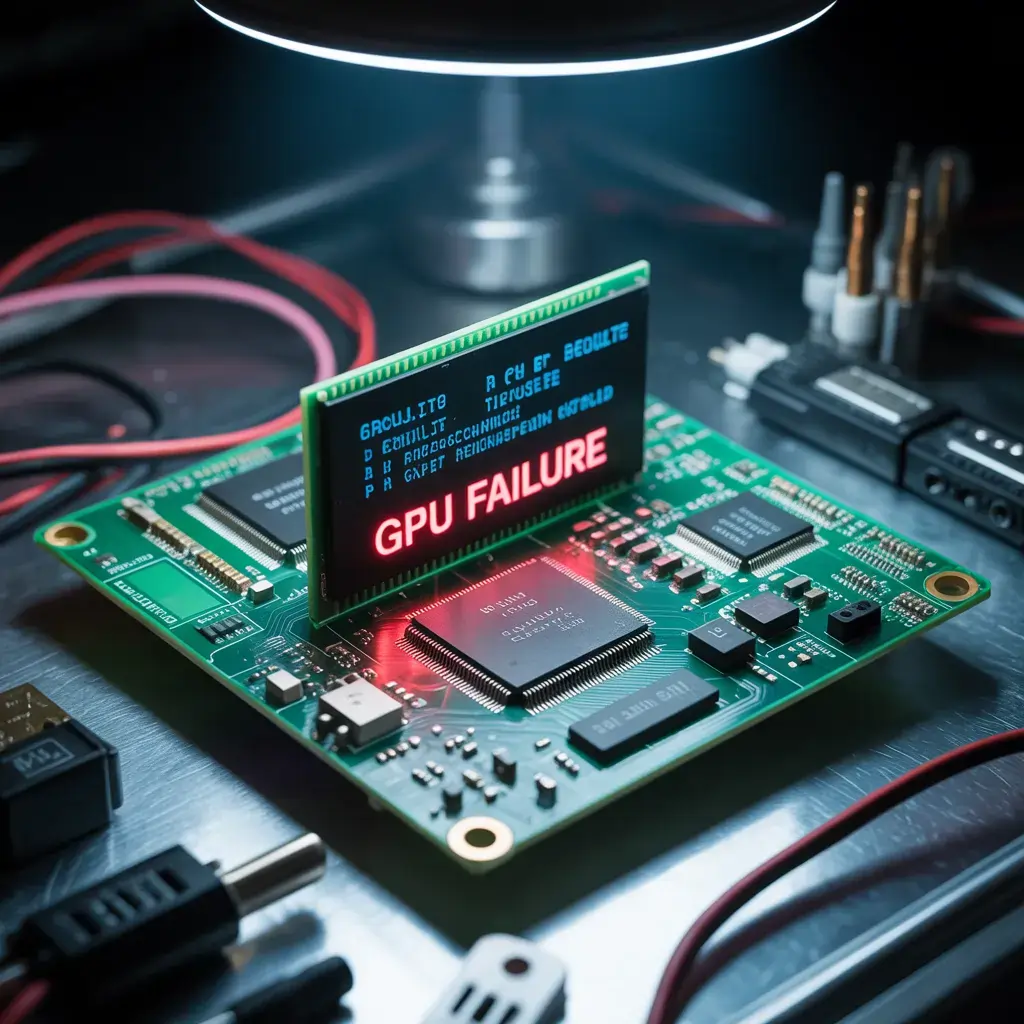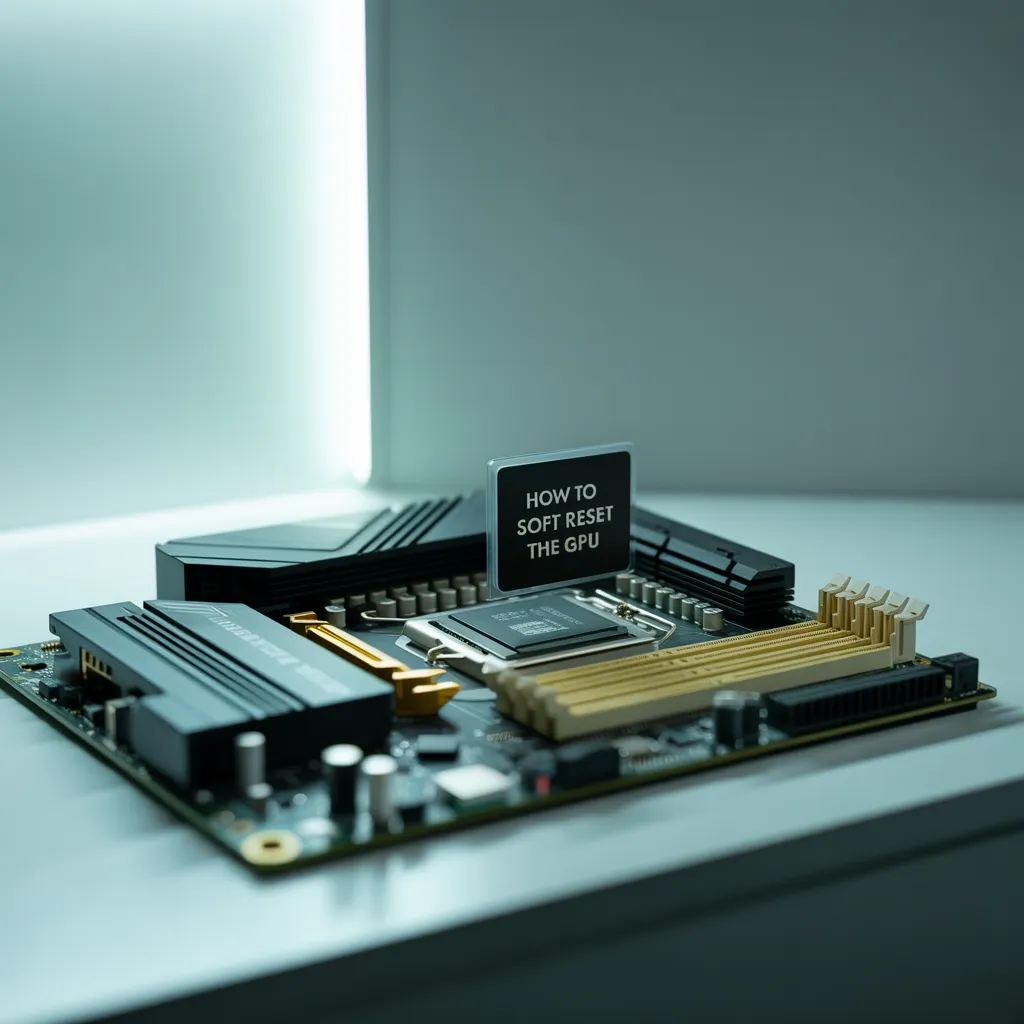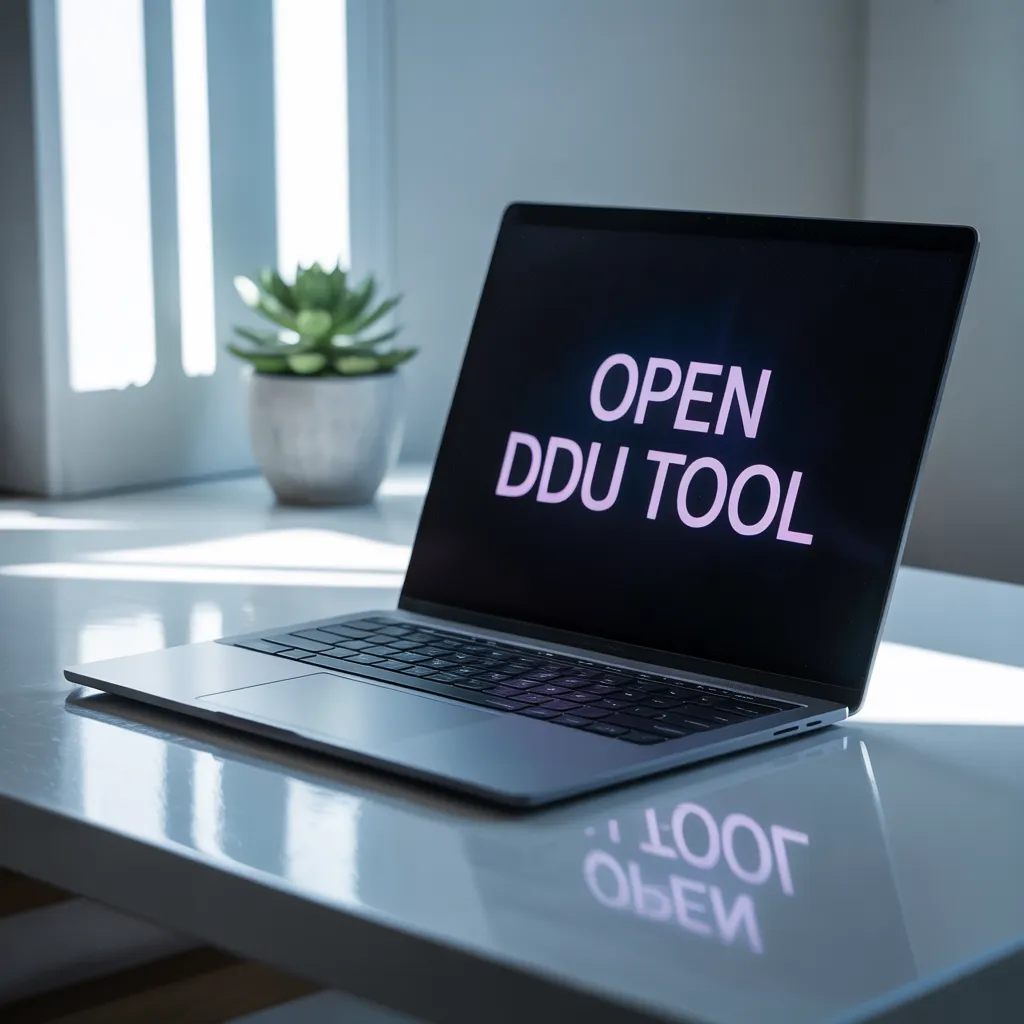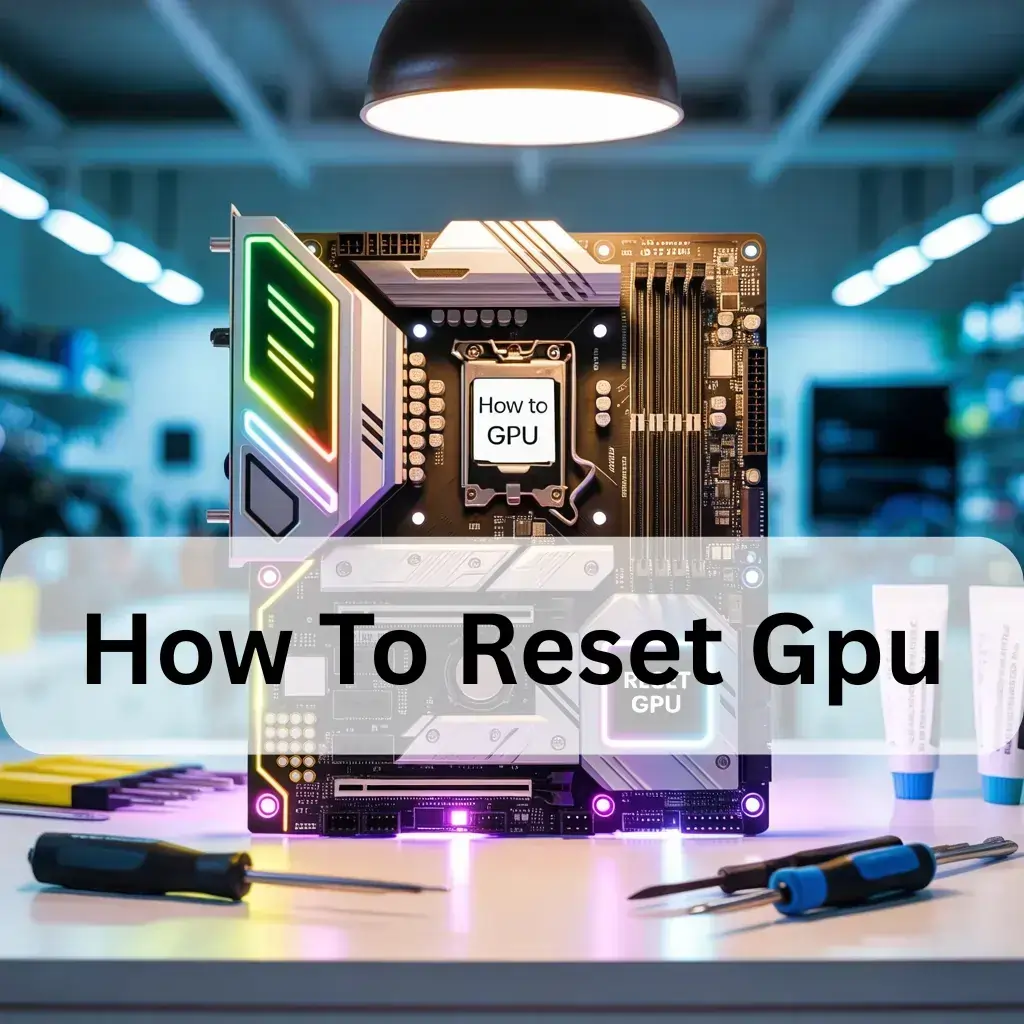First, remove the old driver using DDU in Safe Mode to reset your GPU. Then, restart your PC and install the latest driver from the official GPU company website. This helps fix screen issues, and an accident improves performance smoothly.
In this guide, we will provide step-by-step advice on how to reset your GPU. Whether you face minor or major performance problems, this simple reset could help restore your GPU to its best condition.
Who Needs to Reset a GPU?
You should reset your GPU if your screen goes black or games crash. If you play games or edit videos and your screen freezes or works slowly, a reset can help. Resetting your GPU can make your system fast and smooth again. It is an easy fix that saves time and money. Try a reset first before reinstalling drivers or buying a new GPU.
Symptoms of a Failing GPU:

- The screen shows strange lines or colors.
This means your GPU is not sending the right signals to your monitor.
- Games crash or close suddenly.
If your games stop working repeatedly, your GPU may be weak or damaged.
- PC freezes or restarts on its own.
A bad GPU can make your system unstable.
- Black screen while working.
If the display goes black and returns, your GPU may be the problem.
- The fan gets too loud.
A loud GPU fan means it is working too hard or overheating.
- Display flickers or blinks often.

Flickering can mean the GPU is not working correctly with your screen.
- Warning errors pop up for the GPU.
If you get errors like “Display driver failed,” your GPU is likely failing.
- Videos and images load slowly.
A bad GPU can make graphics very slow or of low quality.
- High GPU temperature always
A failing GPU gets hot even when doing small tasks.
- No display or GPU is detected.
It may be dead if the PC does not find the GPU at startup.
What to Check Before Resetting the GPU:
- Check if the GPU is overheating.
High temperatures can cause many issues. Clean the dust and check the fans first.
- Make sure drivers are updated.
Updating the driver can sometimes fix the problem—no need to reset.
- See if the cables are correctly connected.
Loose or broken cables can cause display problems that look like GPU errors.
- Run a virus or malware scan.
A virus can cause display issues. Always check this before resetting.
- Test the GPU with another monitor.
The problem might be with the screen, not the GPU.
- Check if the power supply is working fine.
A weak power supply can make the GPU act strangely. Make sure it gives enough power.
- Try restarting your PC first.
A simple restart can fix minor glitches. Try this before a complete reset.
- Close heavy programs or games.
If the GPU is overloaded, closing extra apps can help.
- Use Task Manager to check GPU usage.
High usage without a reason may need a reset, but check what is causing it.
- Back up your settings.
Resetting will remove all custom settings. Save your preferences before doing it.
Is Resetting Your GPU the Right Choice?
Yes. Resetting your GPU is a good choice when your screen freezes, games do not run well, or you see broken graphics. It helps fix minor problems in settings or drivers. If you changed your GPU settings or overclocked it, a reset can fix it. It is a safe and free way to resolve many display problems. Always check the wires to the fan, and update before resetting. After resetting, restart your computer. Many times, this small step solves the problem. It does not damage your GPU. It only brings the settings back to normal.
How to Reset Your GPU Software:
If your screen shakes, games run slowly, or the colors look off, you may need to reset your GPU software. This will restore your settings to normal and help your system run smoothly. The process is safe and easy.
1. For NVIDIA Users:
- Right-click on the desktop
- Open NVIDIA Control Panel
- Go to Manage 3D Settings
- Click Restore Defaults
2. For AMD Users:
- Right-click on the desktop
- Open AMD Radeon Software
- Go to Settings gear icon.
- Open the Graphics section.
- Click Reset to Defaults.
3. For All Users Shortcut:
- Press these keys together: Win + Ctrl + Shift + B
- Your screen will blink, and your GPU will reset.
4. Reinstall the Driver if needed:
- Open Device Manager.
- Find Display Adapter
- Right-click and select Uninstall.
- Install the latest driver from the NVIDIA or AMD website.
How to Soft Reset the GPU Without Tools:

You can reset your GPU without using any tools. It is called a soft reset. This can fix display problems or freezing issues. You do not need to open your computer. Just follow these easy steps.
- Press the Windows + Ctrl + Shift + B keys together.
- Your screen will go black for a second and make a beep sound.
- This restarts your GPU drivers without restarting the whole PC.
- Wait a few seconds. Your display will come back to normal.
- Now check if the screen problem or lag is gone.
1. The display goes black:
2. Graphics glitch:
3. Quick fix without a restart:
How to Reset GPU Settings in Control Panel:
If your GPU is not working well or the screen looks bad, you can reset it from the Control Panel. This will put all settings back to normal. It helps if you change something by mistake.
For NVIDIA, open the Control Panel. Go to Manage 3D Settings. Click on Restore Defaults.
For AMD, open Radeon Settings. Go to Preferences. Click on Restore Factory Defaults.
This will not delete your GPU; it only fixes the settings. It is safe and fast.
How to Reset GPU Drivers in Safe Mode:
If your GPU driver is broken or your screen has problems, you can reset it using the DDU tool in Safe Mode. This entirely removes the old driver and helps fix many GPU errors. Follow these steps.
1. Download DDU Tool:
Go to the official website and download Display Driver Uninstaller (DDU).
2. Restart PC in Safe Mode:
Press Shift and click Restart. Then go to Troubleshoot Advanced options Startup Settings Restart.
Press 4 on your keyboard to boot into Safe Mode.
3. Open DDU Tool:

Unzip the DDU file. Open it. Choose your GPU brand (NVIDIA or AMD).
4. Click Clean and Restart:
This will remove all old GPU drivers. It will also restart your PC.
5. Install Fresh Drivers:
After a restart, install the latest driver on the official GPU website.
How to Reset Your GPU Overclock:
If your GPU is overclocked and you want to make it normal again, you can easily reset it. This helps fix errors, black screens, or high-temperature problems.
Reset Using MSI Afterburner
- Open MSI Afterburner.
- Press the reset icon, which is a small curved arrow.
- This will bring all settings back to default.
- Click Apply to save it.
- Restart your PC to finish.
Reset in BIOS
- Turn off your PC.
- Press Delete or F2 when turning it on to open the BIOS.
- Go to Advanced Tweaker settings.
- Find GPU settings and load Default/Optimized Defaults.
- Save changes and exit BIOS.
Common GPU Problems Solved by Reset:
Resetting your GPU can fix many small and big problems. It gives your graphics card a fresh start, which is helpful when games crash or the screen acts strangely. It also helps when the PC feels slow or freezes.
- GPU fan running too fast or too slow
- Display driver crashes or resets.
- Wrong resolution or display settings
- Overheating issues caused by bad settings
- Glitches or lines showing on the screen
- GPU not detected by Windows or apps
Faq’s:
1. What happens to custom settings after resetting a GPU?
All custom settings will go back to default. You will need to set them again if needed.
2. How often should I reset my GPU?
Only reset when you see display problems or performance drops. It is not needed regularly.
3. Does resetting a GPU delete my games or files?
No. Resetting only affects GPU settings. Your files and games will stay safe.
4. Can I reset the GPU without opening the PC?
Yes. You can use shortcut keys or software methods to reset it easily.
5. Is resetting the GPU safe for my graphics card?
Yes. It is entirely safe and does not damage the hardware.
Conclusion:
Resetting your GPU is a quick and safe way to fix screen speed and display issues. It does not harm your system and can improve performance quickly. This guide gives all the proper steps for beginners and experts. Follow each step carefully. If done right, your GPU will run better and smoother, and help your PC work like new again.
Also Read:
What Is A Good Gpu Temp – Learn safe GPU temps today, 2025!
How To Undervolt Gpu-Learn easy undervolting 2025!
Zephyrus G14 Gpu Drivers Missing-Solve Driver Problem 2025!
